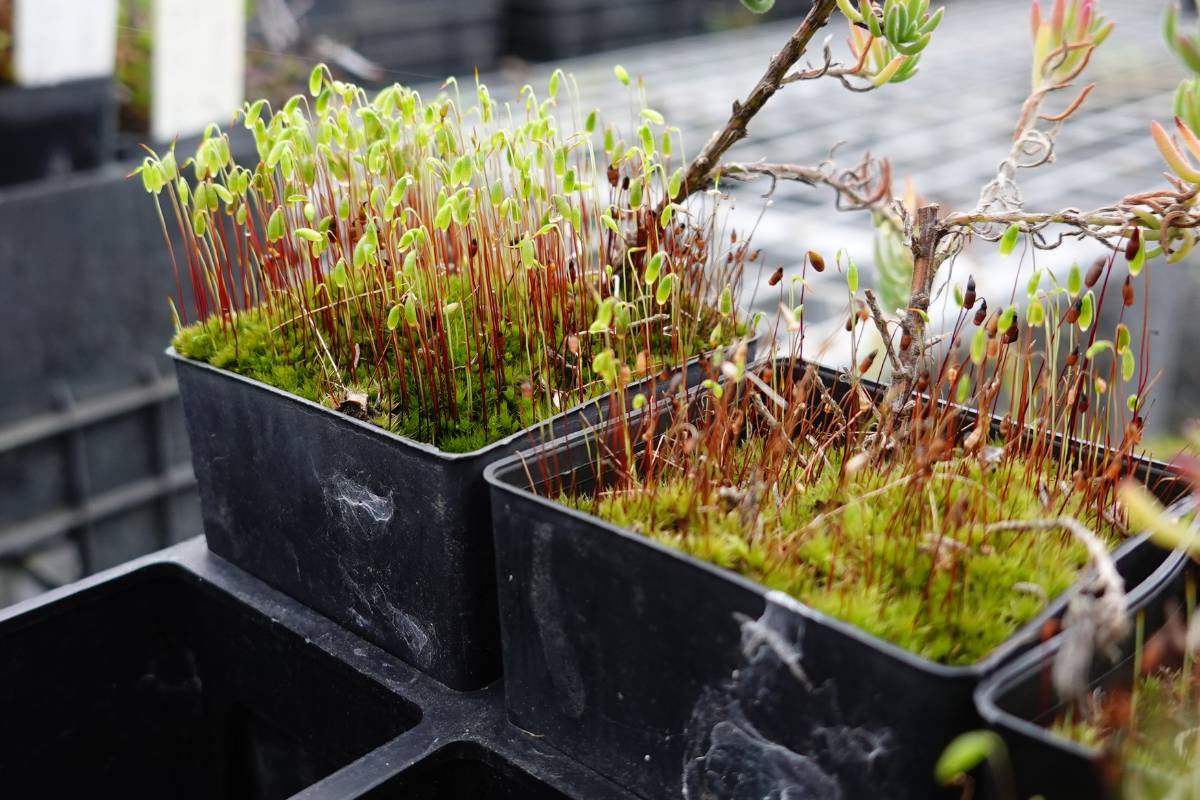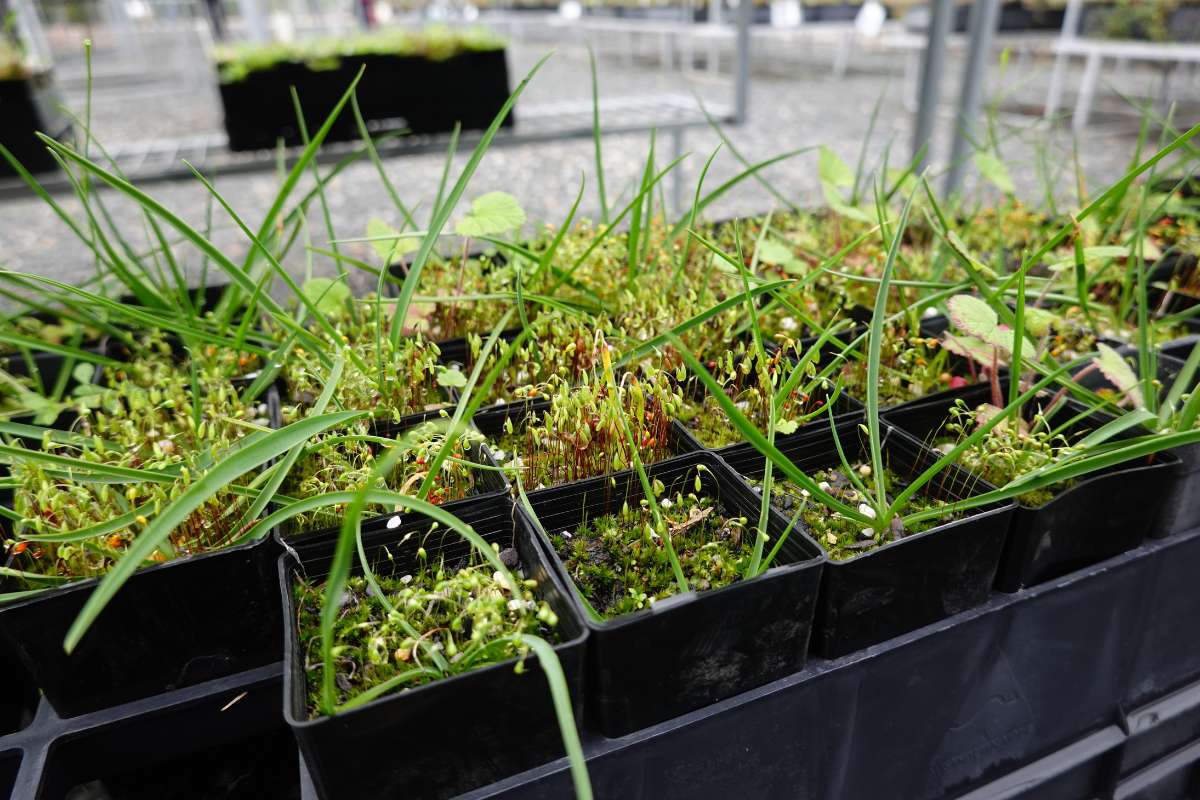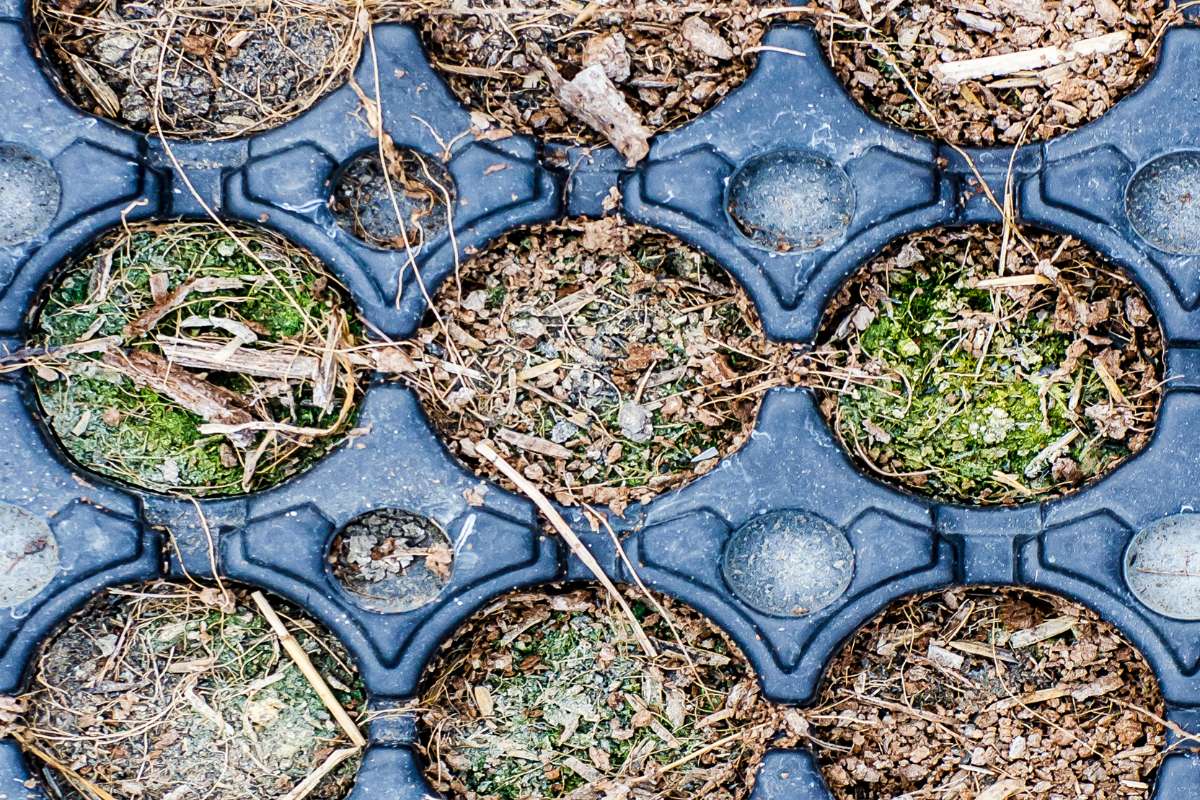It’s a common story: You head out to check on your seed trays but instead of vibrant seedlings and clean planting media, you’re greeted with some type of science project growing everywhere.
Don’t worry – you aren’t the first person to find your seed trays covered in moss or algae, and you won’t be the last, either.
We’ll try to help below, by explaining why moss and algae are growing on your seed trays, outlining the next steps you should take, and providing some tips for avoiding the whole issue next time.
First Things First: What ARE Moss and Algae?
You must know your enemy to defeat it, so it’s important to understand the basics about mosses and algae. Moss and algae are actually fairly different organisms, so we’ll cover them separately.
Moss
Mosses are fairly primitive plants, and are quite different from the herbs, vegetables, or flowers you’re trying to grow in your seed trays. While they need light and water, mosses differ from modern plants in a few key ways.
For example, mosses are non-vascular plants, meaning that they don’t have a system of internal “tubes” for carrying water. They also reproduce via spores rather than seeds.
Mosses usually look like a green “carpet” growing on top of soil or planting media, and they tend to grow best in damp, high humidity environments.
Algae
Algae are even more primitive plants than mosses. Not only do they lack vascular tissues, but many are exceedingly simple, single-celled organisms. Most algae grow in aquatic environments, but some grow in terrestrial habitats – like the ones potentially growing on your seed trays at this very moment.
Algae also reproduce via spores (some species also grow asexually, by simply dividing), but they tend to create a thinner layer on top of a planting media than mosses do. It usually looks more like a thin coating of greenish slime or dust, as opposed to the carpet-like appearance of moss.
But just like mosses, algae tend to grow best in damp places with high humidity.
Do You Need to Identify the Moss or Algae Growing in Your Seed Trays?
Fortunately, you don’t have to break out a microscope and start trying to identify the undesirable plants growing on your seed trays. It doesn’t really matter what species of moss or algae has popped up, nor does it matter whether it is a moss or an algae.
And that’s because you’ll address the problem in the same basic way, regardless of what is growing.
Why Do Moss and Algae Grow in Seed Trays?
Like most plants, mosses and algae tend to grow wherever they can. The spores of some species tend to come from the growing media you filled your trays with, but other spores simply float around in the air until landing in a good growing spot.
Most of these spores land in places that are not ideal, so they never become established. But spores that land in nurturing environments, such as your seed trays, begin growing and colonising the area.
Three key characteristics can make seed trays especially good places for mosses and algae to grow:
- The growing media is rich in resources. Like most plants, mosses and algae need things like nitrogen and phosphorus, which are both present in your seed trays.
- The seed trays are bathed in light. Whether you’re using grow bulbs or sunlight, you are providing your seedlings with light, which is another thing the mosses and algae need.
- There’s plenty of water available. The water you are providing to your seedlings is also beneficial to mosses and algae.
It is the third characteristic that you can usually address to solve problems with mosses and algae.
Your seedlings need nitrogen, phosphorus, and other nutrients, just like the moss and algae do, so there’s not much you can do about that. The same is true of light – obviously, your seedlings need light.
Your plants also need water, but they don’t need as much water as algae and moss do.
Do Moss and Algae Harm Seedlings?
Some gardeners are inclined to ignore the moss and algae colonising seed trays, but that’s a mistake.
Neither algae nor moss are directly hostile to your seedlings – they’re not toxic, or anything like that. But they can still make life very tough on your plants. They may not kill them outright, but moss and algae will typically prevent your seedlings from thriving.
And the reason for that is pretty simple: Moss and algae will compete with your seedlings for resources. When moss or algae colonise the growing media in your seed trays, they’ll start soaking up the nutrients and leave your plants struggling to grow.
Additionally, moss or algae growing on the surface of your growing media may also reduce the amount of gas exchange between the air and media. This can starve the roots of oxygen, making it even harder for your seedlings to thrive. It may also provide the kinds of conditions that will lead to fungal colonisation, which may place your seedlings at risk of fungal rot.
So, while some seedlings may manage to survive moss or algae colonisation, others won’t. And even the ones that do survive won’t be as vigorous as you’d like.
Moss and Algae Removal: Cleaning Up Your Seed Trays
It isn’t terribly difficult to deal with a moss or algae outbreak, though the delicate nature of seedlings does make it a little harder to address than it would be for established plants.
Essentially, you simply need to remove the moss or algae from the top of the growing media (along with a little bit of the media, just for good measure).
The important thing is that you do so without disturbing the seedling or its roots in the process. This requires a little ingenuity, and it’s often helpful to use small, improvised tools to do so. For example, popsicle sticks often make good moss or algae “scoops,” although you can also use a butter knife or strips cut from a plastic water bottle.
Once you’ve removed all the moss or algae, add a bit of fresh growing media to replace any you removed.
Additionally, some gardeners like to spread a thin layer of grit or sand on the top of the fresh growing media. This can help prevent moss or algae from returning.
Preventing Moss and Algae from Colonising Your Seed Trays
It’s better to prevent moss and algae from growing on your seed trays than to deal with the issue after they’ve already started establishing themselves. So, try to employ the following tips and tricks to keep your growing media pristine the next time you set out to establish some seedings:
- Don’t overwater your trays. Damp, poorly drained soil all but guarantees the growth of mosses or algae, so be careful with the amount of water you provide. Use a soil moisture meter to keep an eye on things and consider watering your plants from below by placing your trays in a larger tray with a few centimetres of water. This will keep the moisture near the plant’s roots rather than on the surface where mosses and algae grow.
- Remove humidity domes after germination. Humidity domes (as well as miniature greenhouses) are great for supporting seeds, but they can quickly lead to problems following germination. Once you see leaves burst through the surface, remove the domes.
- Encourage good airflow. Airflow helps to prevent the kind of damp and mucky conditions in which algae and mosses thrive. You may want to move the seedling trays to an area with better airflow or even aim a fan (on a low setting) at your trays.
- Make sure your trays and media are clean. In addition to starting with high-quality trays and growing media, it’s wise to clean your trays between crops. Start by washing them with mild dish detergent and hot water. Then, spray the trays with some vinegar and let them dry completely.
- Watch the temperature. Heat mats are very helpful for germinating seeds and establishing new plants, but supplemental heat can also lead to problems with moss or algae. So, as with humidity domes, consider lowering the heat once the seeds sprout.
***
Again, neither moss nor algae growing on your seed trays is cause for panic. But it is something you’ll want to address. You’ll also want to make some adjustments to your procedures to prevent your next batch of seedlings from suffering a similar fate.
Just remember to watch the moisture level of the growing media and the overall humidity of the environment. Keep an eye on these two considerations and you’ll likely enjoy moss- and algae-free seed trays.








